Christopher Hector looks at some interesting new research….
As long as I have been writing about Sporthorse breeding, this question has been one of the ongoing sources of debate. As far back as 2001, I interviewed Dr Gerd Lehmann who was for 30 years – from 1966 until 1995 – the head of the Westfalien State Stud and is the man credited with turning a basically agricultural group of horses into the modern sport horse type.
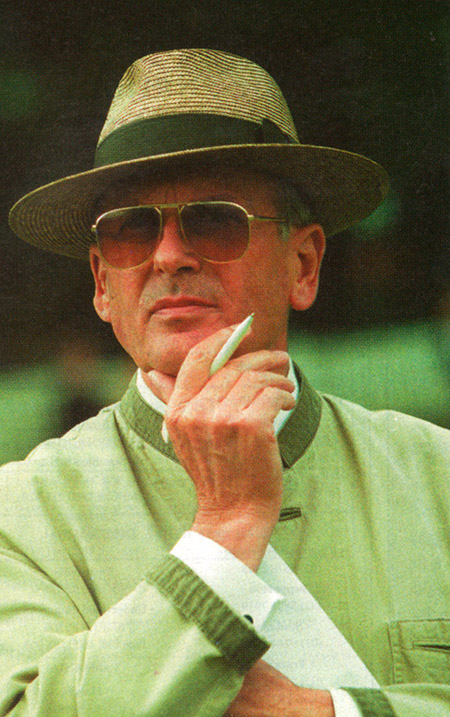
At the time, Dr Lehmann was something of a voice in the wilderness. When the idea of breeding two separate streams of horses – dressage and showjumping – was hugely fashionable, Dr Lehmann argued that a balance was needed, and he also argued that the professional / amateur division was another example of wrong thinking:
“Top horses should be rideable for everyone. The breeders are absolutely wrong if they think they can sell all the rubbish to the leisure riders. It is really wrong to think that the horse that makes the housewife happy riding in the forest, can’t breed high performance horses – the horse of the housewife must have really high rideability.”
Now it would seem that science has come out on Dr Lehmann’s side (interestingly, his suggestion that dressage horses needed a dose of jumping blood, again heresy at the time, is now borne out, as any examination of the top dressage horses’ pedigrees will show). Dr Anne Ricard, a researcher with the French Institute for Horses and Equitation at the French National Institute for Agricultural Research backs up the view that there is no conflict between breeding horses for the amateur and the elite markets. Dr Ricard presented her findings last year at the 2016 French Equine Research Day.
The research would seem to be very well based. Following a 2012 study in which they examined genomic performance indicators, Ricard and colleagues carried out genetic analysis on bloodlines and performance results of nearly 100,000 French showjumpers, over a five year period.
They also looked at four categories: young horses in amateur competitions, young horses in elite competitions, adult horses in amateur competitions, and adult horses in elite competitions.
A complex mathematical equation linked each horse’s performance to that of the horses from the same bloodline, bringing in another 250,000 horses into the equations. Using this data, researchers were able to plot how certain families or bloodlines compared to each other.
The researchers found very little difference in performance indexes between the elite and amateur categories by bloodline, and along the way, also found that performance as a young horse was a good predictor of performance as an adult horse, regardless of whether that horse was in an elite or amateur category.
High level and amateur competition are compatible objectives for jumping horses
A. Ricard, INRA, UMR 1313, 78350 Jouy-en-Josas, IFCE,
Recherche et innovation, 61310 Exmes
Objective
To estimate genetic correlation in jumping competition:
* between young and adult performances
* between amateur and high level performances
Material and methods
- All results in competition from 2009 to 2013: 3,254,266 starts for 96,478 horses (French Equestrian Federation)
- 5 traits:
- Young horses (4-6) + amateur riders
- Young horses (4-6) + amateur riders special circuit (‘libre’)
- Young horses (4-6) + prof riders special circuit (‘classic’)
- Adult horses (>6) + amateur riders
- Adult horses (>6) + professional riders
- Performance = Log (annual sum of points for each ranking in each event / number of events) in each trait
- Multiple traits animal model with age, sex, year of performance, additive genetic value, permanent environmental effect with genealogical relationship matrix between additive genetic values.
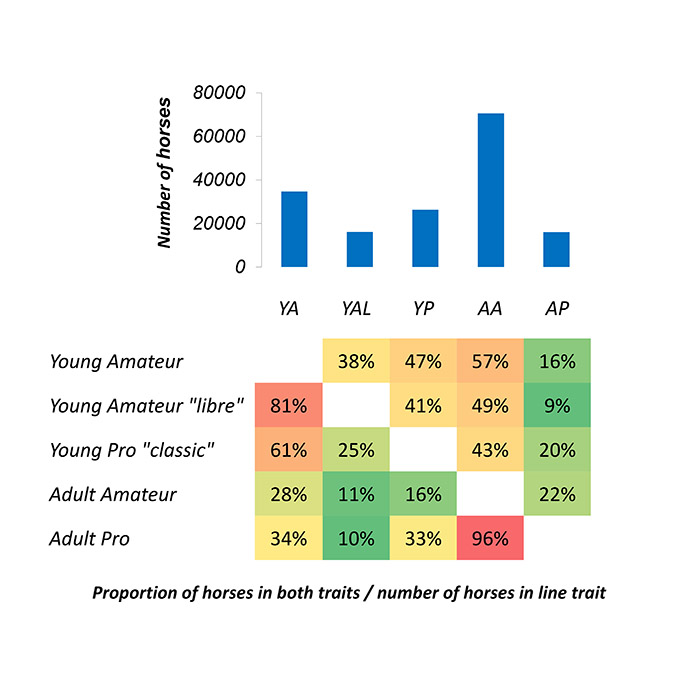
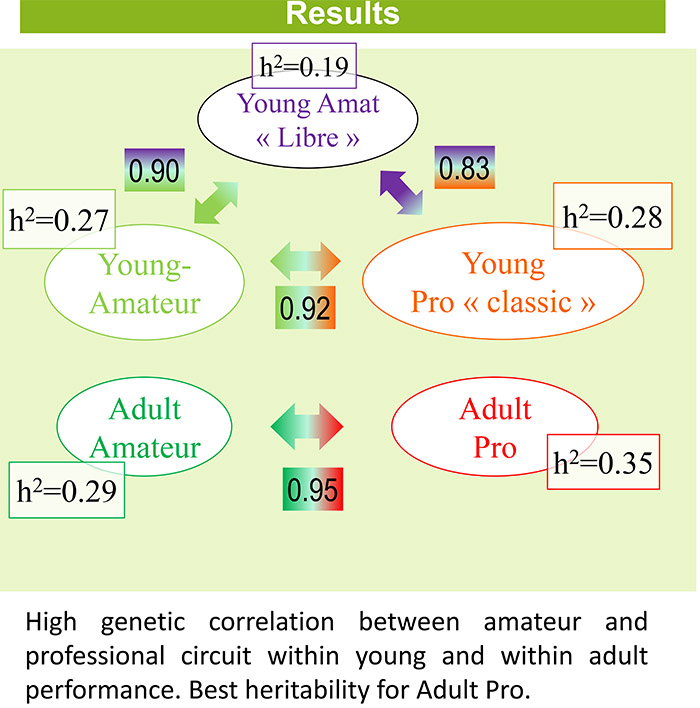
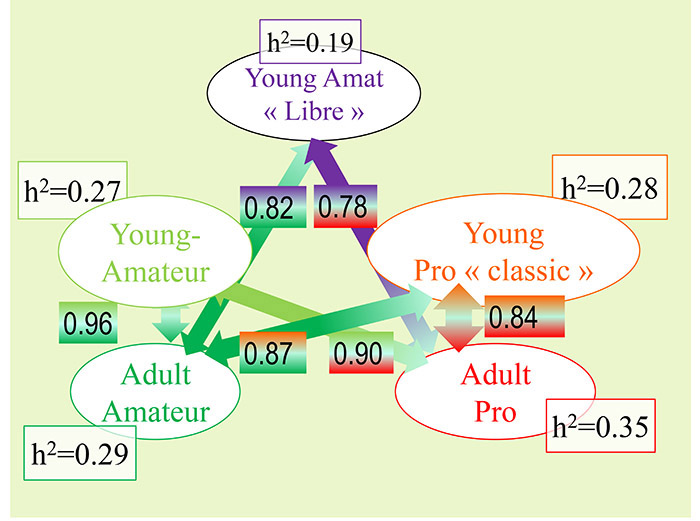
High genetic correlation between Young and adult performance whatever the circuit (Amateur or Pro), with the exception of the ‘Libre’ circuit
Conclusion
In conclusion, production of a leisure sport horse appears to be compatible with the choice of high level stallions for reproduction, and performances in amateur competition provide useful information to produce elite horses.
According to Dr Ricard: “These genetic correlations show that there’s no opposition – and on the contrary a very strong similarity – between the aptitudes as revealed in amateur and in pro competitions, regardless of the age of the horse. The biggest difference between an elite horse and an amateur horse appears to be less his performance capacity and more his temperament, which needs to be adapted to amateur riders.”
Whew, what did she just say? That temperament was not one of the factors included in the measures of performance ability she and her colleagues examined?? I should have thought it was precisely the issue of temperament that separated (some) elite sires from the ammy sires.
Take the example of Cornet Obolensky who was himself notoriously difficult to ride (you’ll find Marco Kutscher’s hair-raising and hilarious account of his first competition ride with the stallion in our Great Stallion Profile) and while his progeny are undoubtedly brilliant, they have a reputation of being – like their sire – difficult.
I put this question to Dr Ricard, and here is her reply:
“I agree that everything is partially due to genetics : temperament and show jumping aptitude.”
“In our study, we haven’t measured the temperament. We only know the final result, which is the success at shows. It probably comes from a combination of physical and psychological aptitudes.”
“What we’ve shown is the strong genetic correlation between success in an amateur and a professional show jumping (0.95). Contrary to the example of Cornet Obolensky that you’ve mentioned, this means that horses born from the same stallion can be successful in either amateur or professional competition.”
“So, generally speaking, a stallion doesn’t produce really good professional horses that are too difficult to ride for an amateur competition. 0.95 is a high score and, even if there are a few exceptions to the rule that can be found, Cornet Obolensky’s case is a rare one.”
“Nevertheless, our result is global: we only know there are very similar characteristics that make for success in amateur and professional competition. But we know nothing about key details between physical aptitude and temperament. We measured a combination of both. Maybe we would have obtained more precise results by measuring temperament. Then, we might have observed more differences between the temperament of an amateur horse and a professional horse than the difference we’ve seen between final results – which is a combination of both physical and psychological aptitudes.”
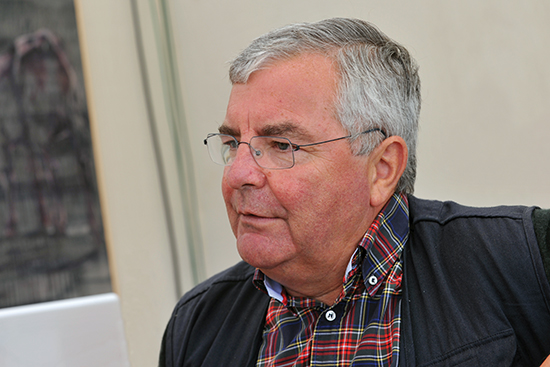
Arnaud Evain is widely regarded as one of the world’s great experts on Sporthorse breeding, he agrees basically with Dr Ricard:
“It is not two markets. A champion is a meeting of a better than average horse, and good luck. We have bred a European Champion, Kraque Boom Bois Margot, and at the end of the day he became the European Champion, not because of the choice of the father and the mother, not because of all the good training, but also because Okidoki missed the first fence in the final – otherwise, he would have been the silver medalist and everyone would have forgotten him.”
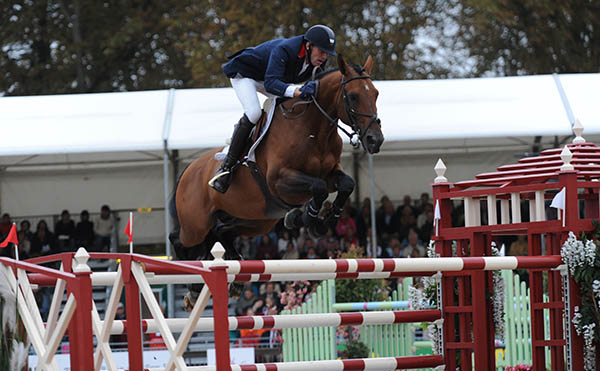
Kraque Boom Bois Margot and Kevin Staut on their way to a European Championship
But if he hadn’t become a championship competitor, would he have been a nice horse for your wife to ride out in the forest on a loose rein?
“Probably yes. It is a question of education. I have a good friend who is a lawyer and he has one of the most successful horses in the world, which has achieved more than 70 victories internationally in three star CSIs and above, with Roger-Yves Bost, his name is Jovis de Revel, and my friend rides the horse all week, and Roger-Yves Bost rides him only at the weekends. With the champions you can find examples and counter-examples. A champion is an accident.”
However, Arnaud worries about the lack of definition in the Ricard research.
“We can agree with the overall correlation but we should enter in the details of the factors playing a rôle with the performance: range in the gaits, scope, respect…. and see if all correlations are the same.”
In other words, if there are some features that distinguish the elite from the amateur. Certainly this has been the common assumption within the breeding world.
Another of the world’s great experts on breeding, Bernard le Courtois firmly separates his stallions into sires for the top sport and sires for amateurs, and he cites the example of gold medallist, Dollar du Murier:
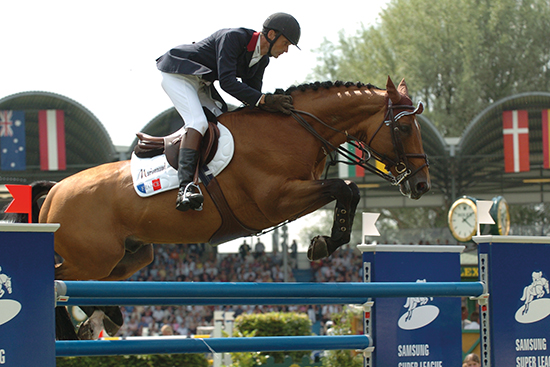
Dollar not producing ladies’ hacks…
“Dollar du Murier, as his sire before him, has a reputation of producing horses that are too difficult for amateur riders. But what stallion with a reputation for producing high-level stars also turns out riding hacks for gentrified ladies to ride in the Bois de Boulogne? There are many other stallions for this purpose.”
The breeding director of the Oldenburg Verband, Dr Wolfgang Schulze-Schleppinghoff feels that the divide is more one of discipline:
“The greatest difference in my eyes is between the horse for jumping competitions or dressage, that is the great division, but the horse should be the same for the fun rider as the Olympic rider. It is not the level of competition so much as the question of dressage or jumping.”
People often say, for example with the Jazz horses, that these are horses for the professional… do they need to be a little crazy to go to the top?
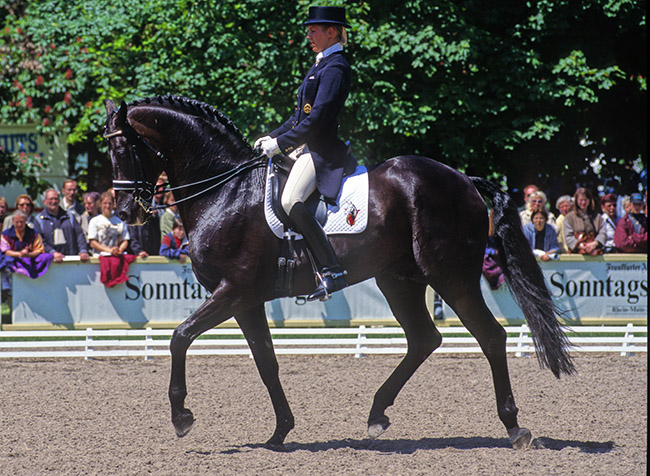
Rubinstein – horses for ammies and horses for pros…
“Okay but remember Rubinstein, he was easy to ride and he makes horses for amateurs and for professional riders too. With Jazz, maybe some stallions have high quality but their progeny are not so easy to ride, but we have to breed, in my opinion, horses like Rubinstein, that have the possibility to go in the highest level, and also horses for the amateur rider.”
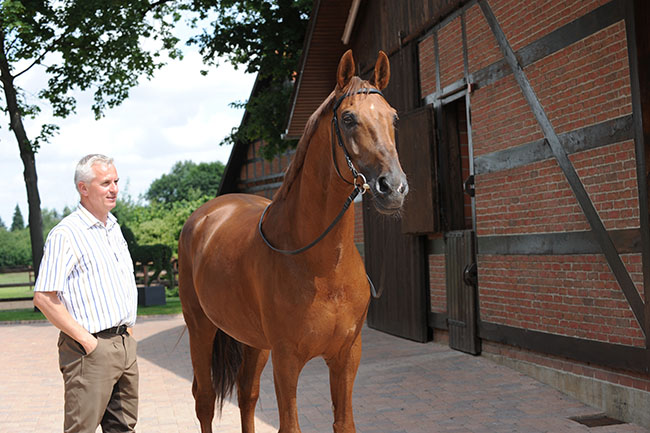
Wolfram and Breitling – making sweet GP horses…
Wolfram Wittig is unique in that he is a Grand Prix dressage rider himself, and has trained of some of the world’s most successful competitors – including Isabell Werth – while at the same time, he and his wife, Brigitte, have bred and produced a enormously successful line of home bred dressage horses by their own stallion Breitling. Horses that have competed successfully in young horse classes and in Grand Prix. Wolfram disagrees with the idea that the horse for Grand Prix must be a bit crazy and not a horse the normal rider can ride:
“No. A good horse is still a good horse. A very good example is Satchmo. Satchmo is never scared. He goes in all prize-givings, every time, beautiful walk, he was never scared. You ask Isabell, if she would select one of her horses to go out on the field, she would take Satchmo.”
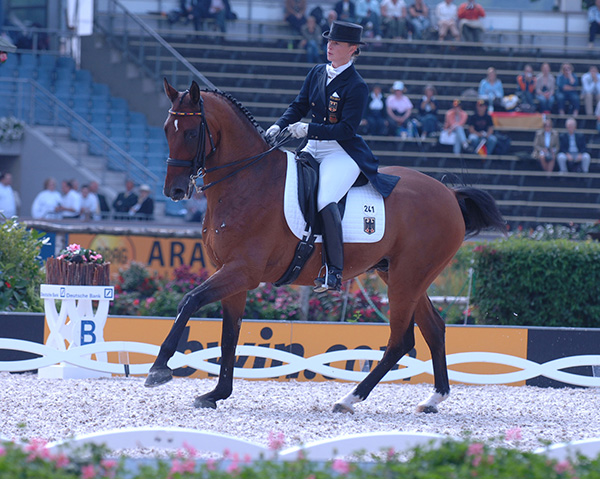
Isabell and Satchmo
So you don’t think there are two sorts of horses we breed for – the horse for the housewife to ride in the fields and the other, the horse for Isabell to win a gold medal…
“The horse must be useful for everybody, and then depending on the quality of the movements, we can decide what to do with the horse.”
They don’t have to be crazy to go Grand Prix?
“I don’t think so. If you want to reach a high level, you don’t ask for crazy, because if you can’t control it, it is like a bomb. The Grand Prix horse should be good in the mind, and we should be focused on breeding that, otherwise we are taking the wrong direction.”
It would seem that despite the science, the debate will continue where-ever horse breeders meet and solve the problems of the breeding world…
Want to breed a Grand Prix dressage horse? A World Cup Showjumper? A riding horse to enjoy? You can choose from a range of top European stallions from IHB. Go to: www.ihb.com.au Stallions like:
Vitalis
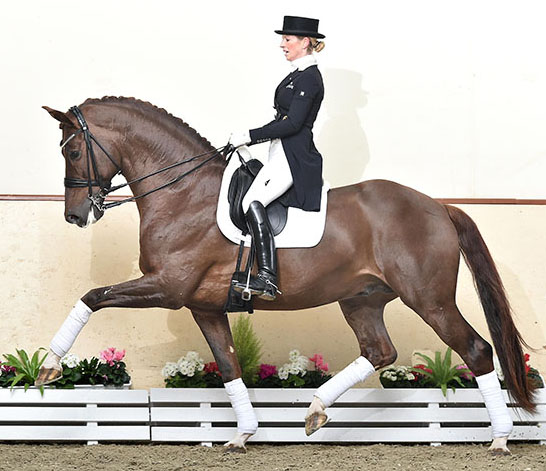
Diarado
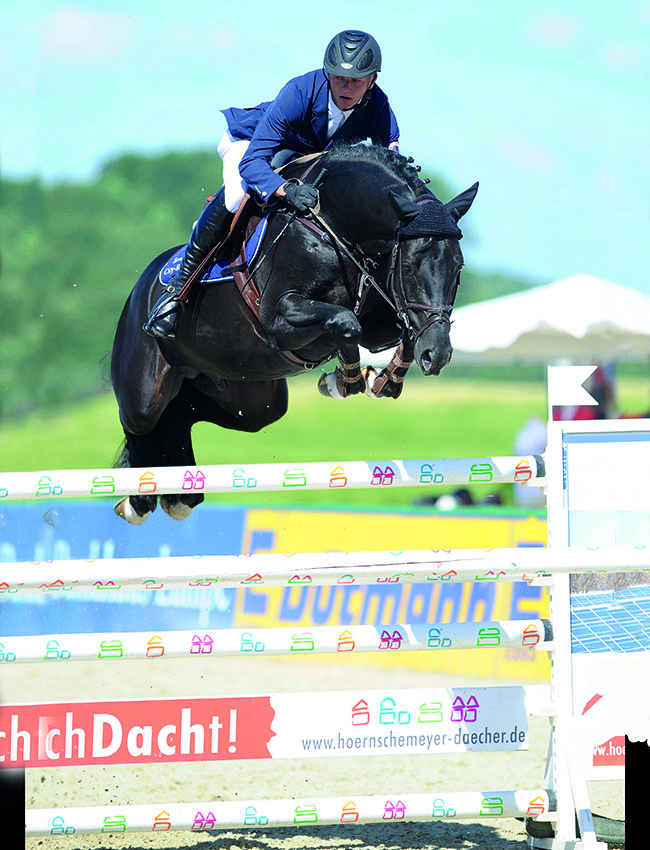
Delat Ion
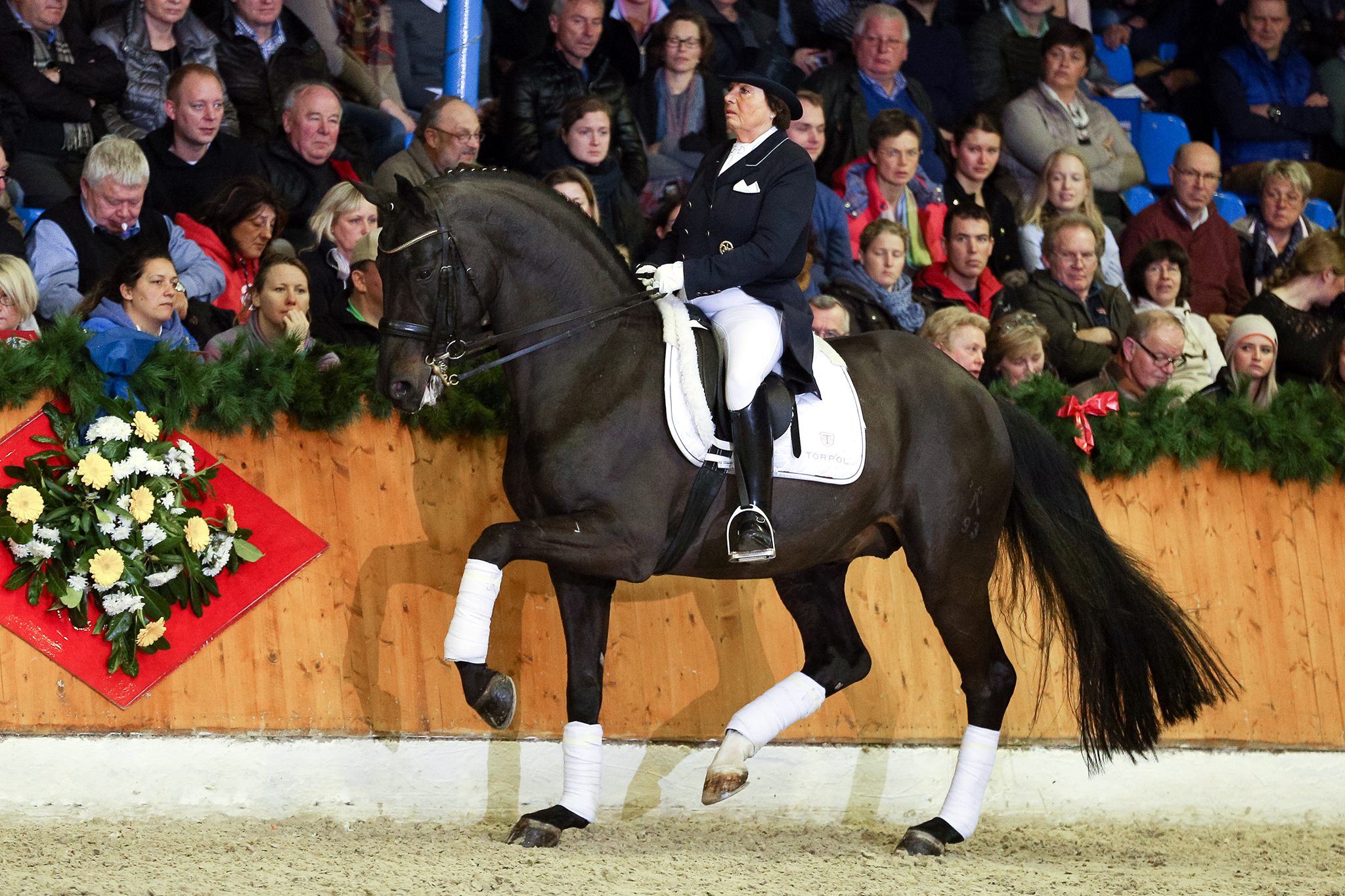



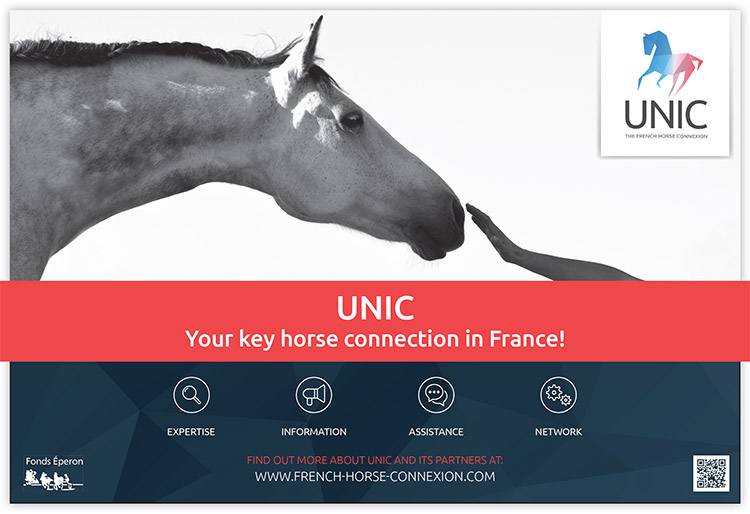

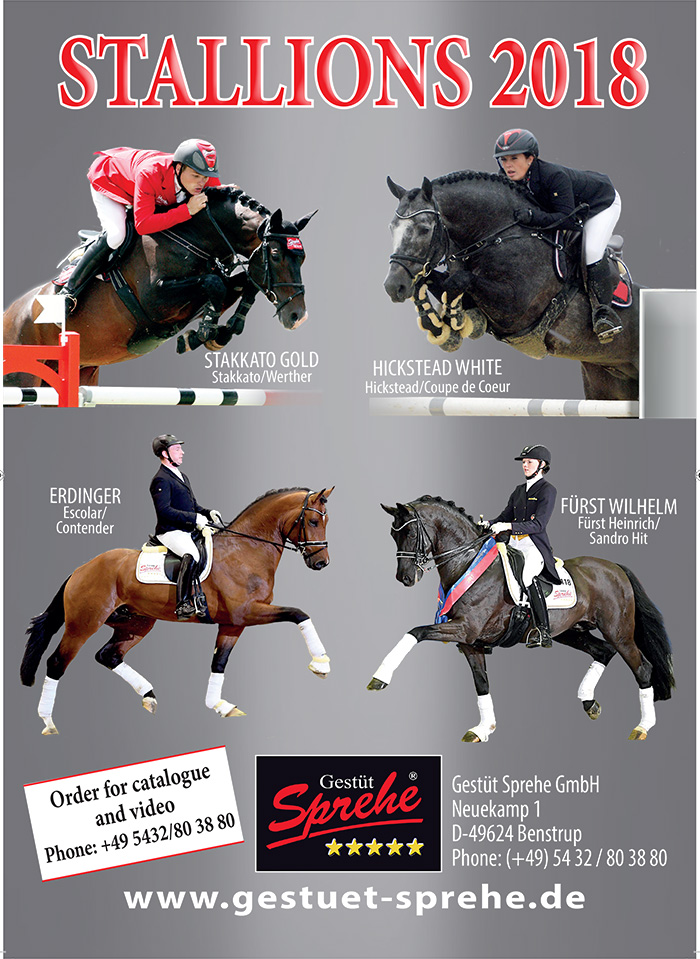

In a tutorial during my time as a student of International Equine Business Management at The Royal Agricultural College, Cirencester, some 25 years ago, we were asked to list the criteria we considered when choosing a stallion to use. I put temperament at the top of my list. I have not changed my views on this since then. There is no point having a brilliant horse if it is so ‘hot’ it won’t reproduce it’s form when competing in public.
A huge % of the sport horses bred will end up in amateur hands, so need to be pleasant to handle and ride. Only a few will have the chance to end up in the hands of elite trainers and riders, so what happens to the rest if they are unsuitable for the amateur majority? It often becomes a welfare problem, particularly in these days of overproduction. The rush to use stallions that will pass bad temperament traits on down the line, simply for short-term financial gain, has to be resisted. We are really lucky to have so many beautiful and talented horses to watch and to ride, but the global picture has to be considered when breeding. The mass producers in particular must bear this in mind and leave a responsible long-term legacy.
Dr. Robert Losey and team in 2010 published much the same findings in “identifying Broodmare Prospects for an Elite Band”.: that a horse who shows talent at any level of sport is a good breeding prospect and a horse who performs poorly at any level should be avoideb..that the good genetics remain the same…and historically in America, as far back as we can find documentation (1600s) our sport horses were always dual talented: able to win races and fearously fox and wolf hunt at full speed over rough ground but still be tractible enough to pull the family carriage and be ridden by children…a good horse is a good horse…the Irish Horse, the oldest documented sport horse genetic population available to the breeder today for two thousand years has combined sport aptitude with a pleasent temperament…good sport horse breeding is nothing new and it is the breeders task to keep the talent potent without losing the pleasent and willing temperament…it can be done and is done at the highest level of sport…you can look to the American Standardbred as an example…a breed performing at the height of its use but still a docile and willing mount for the amateur
I agree 100% with everything said in this article. ….